14 Tips on How to Improve Home Energy Efficiency
-

- Last updated:

It turns out a lot of people want you to improve your home’s energy efficiency. Homebuyers see value in greener, updated properties, as houses with an energy efficiency rating sell for up to 5% more than lower-rated homes.
Considering current home sale prices, that can have some hefty financial implications. And real estate isn’t the only sector making the push for eco-friendly households.
The government also wants to make it easy for you to switch to less costly equipment. An essential part of the Inflation Reduction Act passed in August involves providing over $10,000 in tax credits and rebates to homeowners who make energy-efficient improvements. You can buy new appliances, an EV, or solar panels, and the government will help foot the bill!
Even if you’re not planning a major remodel or purchase, you have plenty of simple ways to boost your home’s energy efficiency today. You’ll save money, reduce your carbon footprint, and even live more comfortably with a few thoughtful adjustments.
Our 14 Tips for Improving Home Energy Efficiency
1. Adjust Your Thermostat
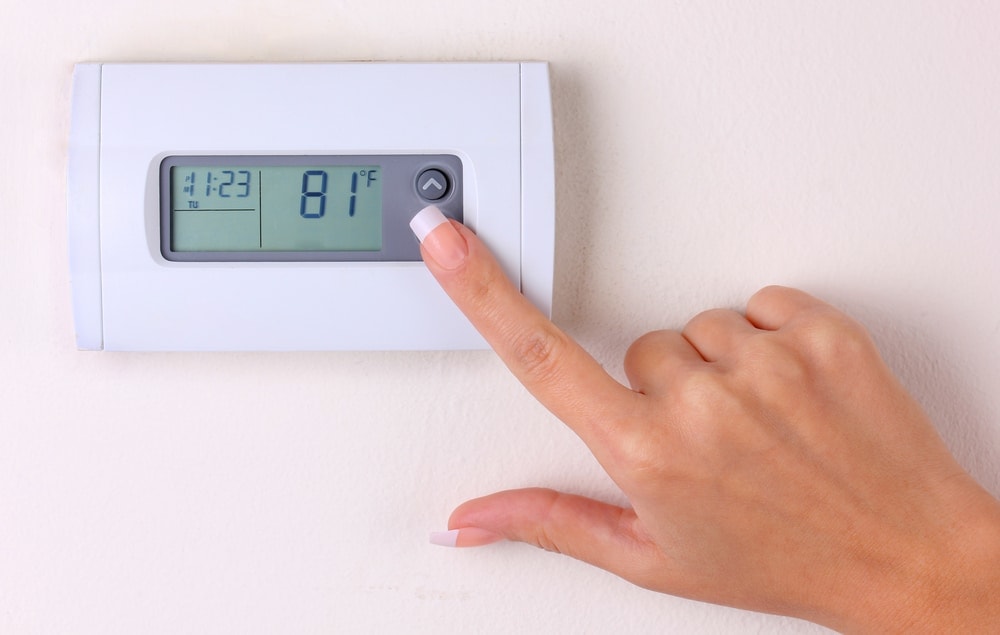
Setting the thermostat is perhaps the easiest (though not the most comfortable) way to start saving money on your utility costs. Bumping the indoor temperature up by 3–5 degrees in the summer and down in the winter is enough to make a notable change in your heating and cooling bills.
By lowering the temperature by 7–10 degrees at night while everyone is asleep or during the day when nobody is home, you can shave up to 10% off your power consumption.
Your ceiling fans can also help your HVAC stay efficient and keep your home comfortable for less money. Set your fans counterclockwise in the summer to create a wind chill effect and allow you to bump the thermostat up a few degrees. In the winter, reverse the direction. The clockwise-spinning fan will circulate warm air near the ceiling back into the room.
2. Get a Better Thermostat
A smart thermostat is a nominal investment and easy upgrade that will quickly pay for itself in energy savings. As part of a smart home system, your thermostat can monitor your heating and cooling usage, make adjustments, and provide ideas for improving your home energy efficiency. A study by Nest determined that its Learning Thermostat saved users 10–12% on heating usage and roughly 15% on cooling.
With control through an app, smart thermostats let you set schedules and program the heat and air to only turn on when the thermostat knows you’re home. It will ensure you’re always comfortable without using any excess energy.
3. Kill Energy Vampires
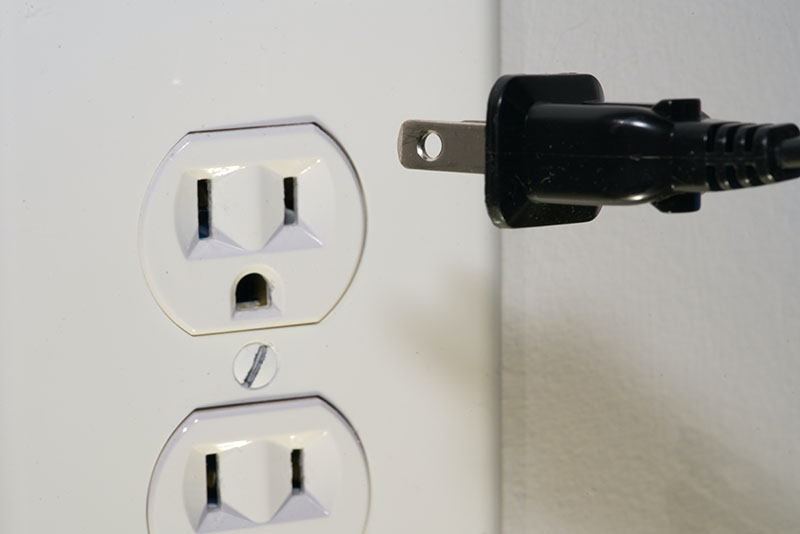
Energy vampires are appliances and electronic devices that continue to drain power even when we think they’re off. Some of the most common energy vampires include:
- Coffee makers
- Laptops
- Gaming consoles
- DVD/Blu-ray players
- Mobile devices
- Cable boxes
If it has a built-in clock, a remote control, or a large brick charger, it’s drawing electricity. Even a few green-friendly items, like smart LED bulbs, can sap more energy than basic equipment by having an idle load. As homes upgrade to digital and smart fixtures, the constant energy demands continue to increase.
An NRDC study of California households found they had an average of 65 idling devices. Nearly a quarter of a household’s energy load comes from these phantom power sappers. In some homes, they account for over 40% of the total electrical load!
The typical household loses roughly $165 per year to wasted energy from idling devices. The environment also pays for our always-on devices. Energy vampires account for nearly 1 billion tons of CO2 emissions annually in the U.S. By turning off electronics, Americans can cut their GHG emissions by roughly 15% while saving $19 billion annually.
Unhooking your devices every night is a great way to start cutting your power bill, but pulling 65 plugs every day can get a little tedious. Save yourself some trouble by using power strips. Many modern strips have convenient smart features to turn them on and off automatically, making it easy to improve your home’s energy efficiency.
4. Leave the Lights Off
Turning lights off may not significantly impact your electric bill, but every bit helps. Turning the lights off as you leave the room is easy, so nobody should have too much trouble turning it into a habit.
You can turn off LED or incandescent bulbs whenever you leave the room without affecting their lifespan or efficiency. Compact fluorescent (CFL) bulbs, by contrast, wear out quickly from the constant on and off. The general rule for these bulbs is to turn them off if you’re going to be gone for at least 15 minutes and leave them on if you’ll be right back.
5. Change Your Lightbulbs
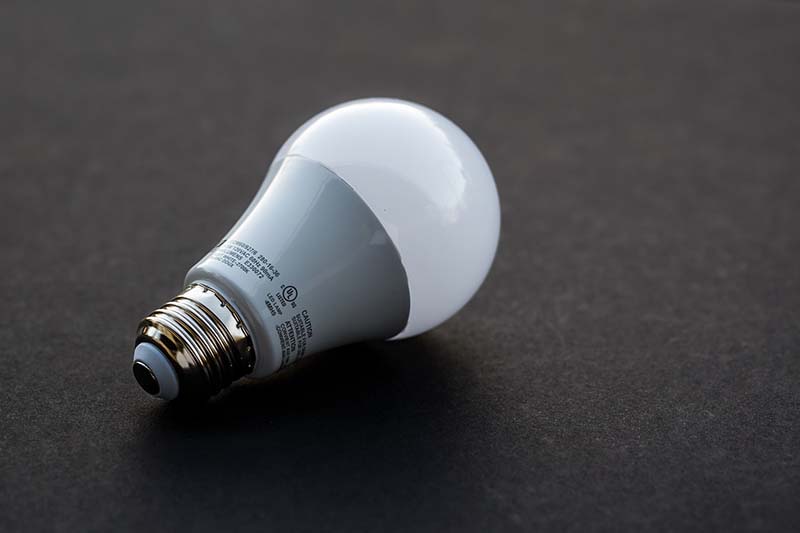
Turning off the lights is helpful, but upgrading your lightbulbs to more efficient models makes an even more noticeable difference in your energy bill.
Roughly 15% of a home’s electricity consumption goes toward lighting. The average homeowner can save over $200 annually by switching to LED bulbs. LEDs also last up to 25 times longer than incandescent, saving you even more money at the store and decreasing landfill waste.
6. Replace HVAC Filters Regularly
The DOE states that high-efficiency air conditioning units can save up to 50% on heating and cooling energy usage. But if you don’t have a few thousand dollars to upgrade your system, keeping on top of your filter changes is often enough to make an immediate difference.
A/C filters can quickly fill with dust and debris, requiring changes once every 30–90 days. Obstructed airflow will reduce the system’s efficiency, making it work harder and longer to keep your home at the optimal temperature.
By maintaining a clean filter, your home’s heating and cooling energy consumption could drop by up to 15%. You’ll see a notable difference in your utility bill, and proper upkeep will reduce stress on the system, allowing it to last much longer.
7. Utilize Shades and Awnings
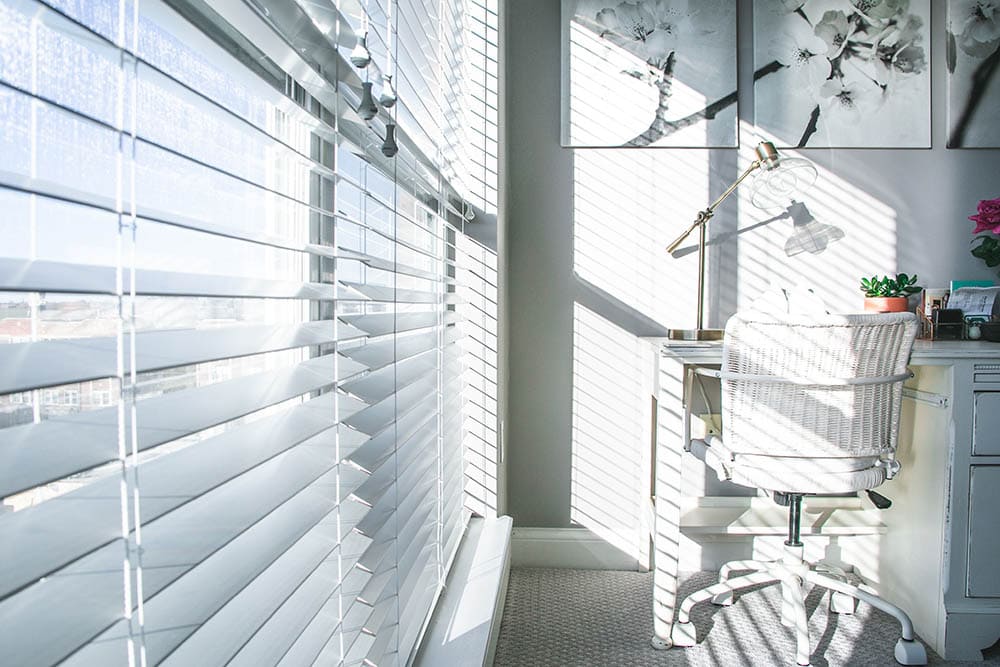
Window coverings are a simple way to improve home energy efficiency in the summer and winter. Blinds, shades, curtains, and drapes are easy to install and can reduce heat gain by 33–45%. Reversible shades with light coloring on one side and dark coloring on the other give you more control over heat absorption and deflection as the seasons change.
An awning is an attractive way to save even more energy. Depending on the window’s direction, a retractable awning can reduce solar heat gain by up to 77% in the summer. You can pull it back in the winter to let in the light and warmth.
8. Wash Clothes in Cold Water
Saving a few hundred dollars a year could be as easy as hitting a different button on the washing machine. According to Cold Water Saves, cold wash/cold rinse cycles cost about 64 cents less per load than hot wash/warm rinse cycles. That could save you almost $250 a year on your electric bill!
You can likely use cold wash cycles more than you realize. Higher-quality detergents are becoming more effective at lifting stains in cold water. Keeping the heat down will also be gentler on any fabric you put in the machine.
With lower energy consumption, you’ll reduce your carbon footprint as well. Heating accounts for about 90% of a washing machine’s energy usage. By running four out of every five loads in cold water, you can cut out 864 pounds of CO2 emissions.
9. Replace Your Showerhead
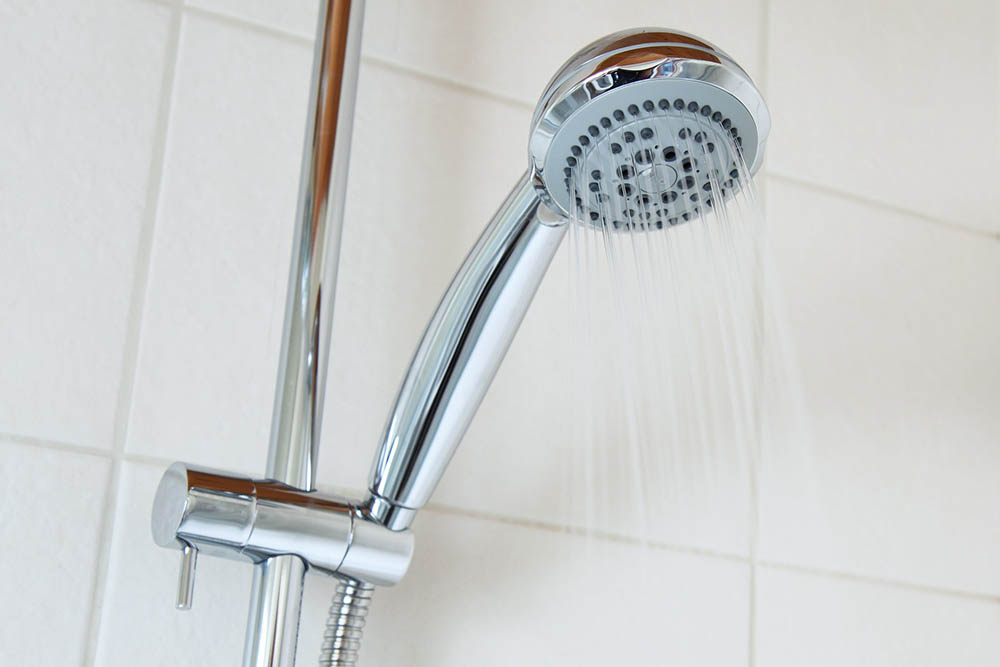
Showering takes up nearly 17% of residential water, with the average family using about 40 gallons every day to get themselves clean. By switching to a low-flow WaterSense-certified showerhead, you can cut your shower’s water consumption in half without sacrificing comfort.
The EPA estimates annual savings of about 2,700 gallons of water per household with a WaterSense-labeled showerhead. If everyone in America upgraded their showers, the country would save over 260 billion gallons of water and more than $5 billion in utility costs.
10. Look for Air Leaks
Air sealing and insulating are two of the most impactful steps you can take to reduce your home’s energy consumption. By preventing unnecessary heat loss or absorption, homeowners can reduce their heating and cooling bills by an average of 15% and overall electric bills by 11%.
Air leaks can appear in numerous places around the home, including:
- Baseboards
- Floor edges
- Wall and ceiling junctures
- Outlets and switches
- Doors and windows
- Utility service entrances
- Fireplaces
- Attic hatches
- Exterior dryer vents
- Vents, fans, and air conditioning units
Filling holes and gaps around the interior and exterior will reduce air leakage and offer the added benefit of keeping pests out of the house. Caulking around window or door trim and outlets will seal off common heat loss points, as will adding weatherstripping and sweeps around windows and doors.
11. Purchase More Energy Efficient Appliances
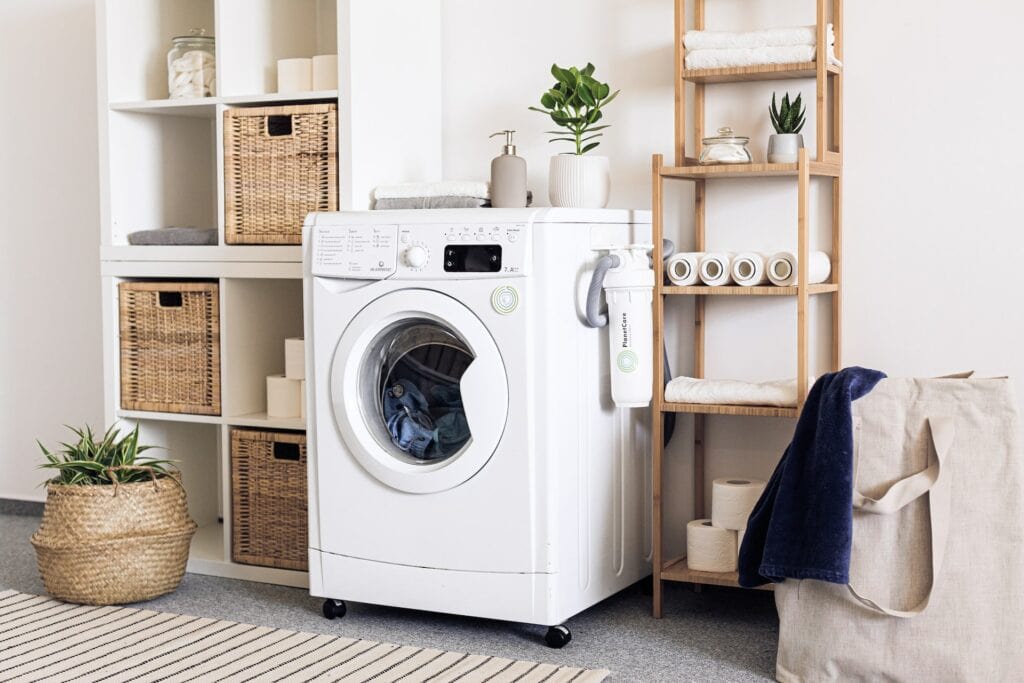
While not the cheapest way to improve home energy efficiency, Energy Star products are a no-brainer when you need laundry, heating and cooling, or kitchen appliances.
According to Energy Star, a typical household can cut their annual utility bills by $450 with the upgrade. As you’re shopping, look for the blue Energy Star label and yellow Energy Guide tag to help you compare operating expenses and understand your annual savings. Rebates and tax credits may also be available to help you cover some of the up-front costs.
12. Use Better Insulation
Insulation is the other half of the equation in sealing off your home to prevent heat transfer.
The easiest place to improve insulation is the attic. Your primary goal is to determine the thickness of the insulation between the floor joists or ceiling rafters to see if you need to add any more. The recommended amount will depend on the type of insulation and your home’s location.
To check the wall insulation, try to look around an outlet to avoid knocking holes in the wall. If you have a newer home or have the builder’s information, you may also be able to get detailed information from the contractor on the home’s insulation levels. That can also be crucial in saving you time checking your basement and crawlspace insulation.
13. Use the Home Energy Saver

The Home Energy Saver from the Department of Energy will help you determine the proper amount of insulation to add based on your findings in the home. The assessment tool offers several features to assist in a DIY home energy audit. It supplies recommendations for improving efficiency in areas such as:
- Heating and cooling
- Appliance usage
- Lighting
- Water heating
Users receive customized feedback based on their household activity, home construction and history, and location. Reports give you resources to plan your upgrades, allowing you to estimate energy savings, payback timeframes, and initial costs.
14. Schedule an Energy Audit
A home energy assessment is arguably the best way to find all of your energy efficiency opportunities. A professional assessor will visit your home to identify air leaks, inspect appliances, test chimneys, check insulation, and look for safety concerns.
The home’s history of energy use and exterior and interior condition will let your auditor formulate a strategy for improving your home’s energy efficiency. By following the recommendations, you can expect to save 5–30% on energy costs.
Assessments generally cost $100–$500, though larger, more complex homes may increase the price to over $1,000. A local Google search will help you find home energy businesses near you, some of which offer consultations free of charge.
Final Thoughts
Massive overhauls like adding solar panels can completely change your perspective on energy consumption, but most of us likely aren’t willing or able to make that kind of adjustment today. You still have plenty of opportunities to make meaningful changes with minimal effort and expense. Follow these tips to see how simple it can be to lower your utility bills with your carbon footprint.
Featured Image Credit: LookerStudio, Shutterstock
Contents

